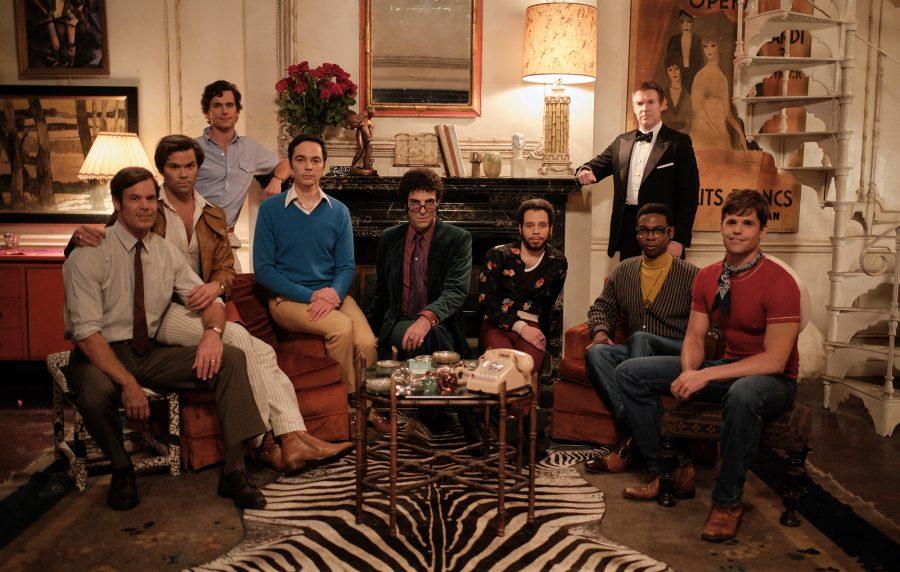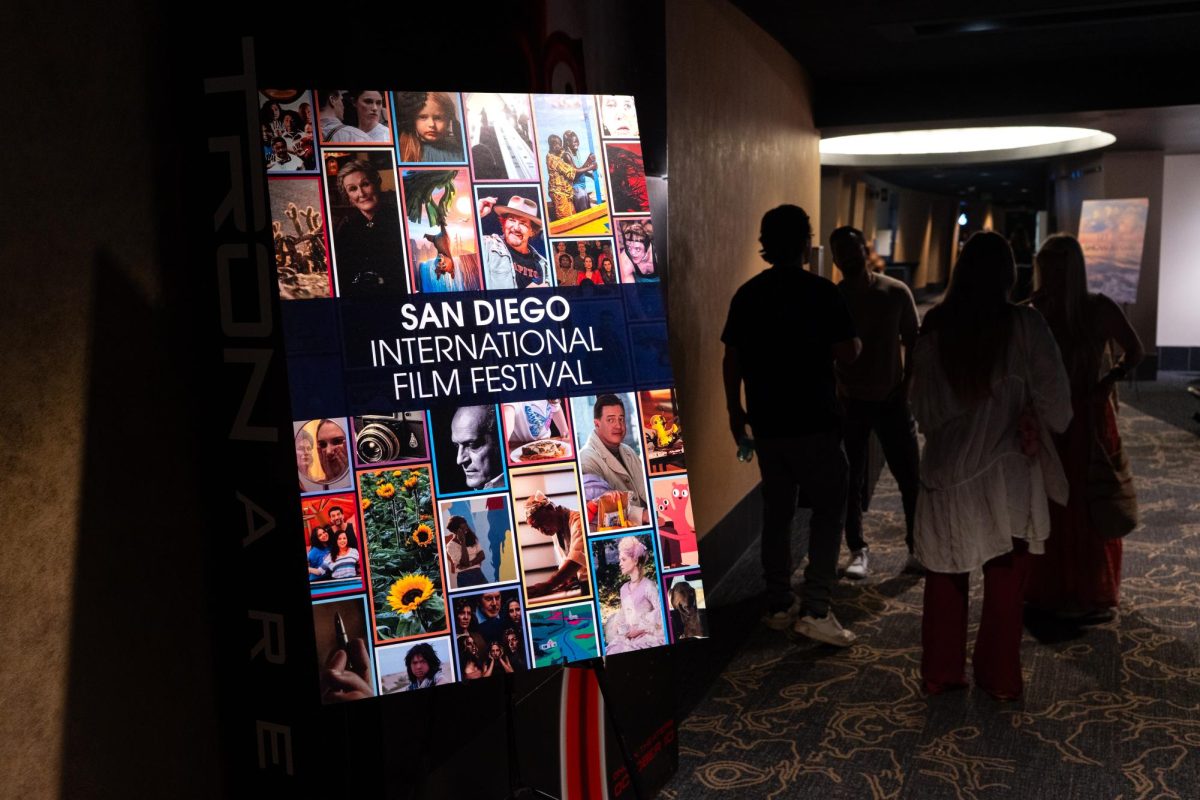Moderated by rain and records, “The Boys in the Band” is a lively, aching trip through the shame, cruelty, guilt, and selfishness of internalized homophobia.
Based on the 1968 Mart Crowley play and succeeding a 1970 film adaptation, the 2020 film version of “The Boys in the Band” combines the breakneck pacing of theatrical writing with the limitless visual capabilities of film to deliver a complex look into 1960s Manhattan homophobia. The film takes place over the course of a single night, with the simple premise of a group of old friends coming together for a birthday party. As the alcohol flows and an unexpected guest arrives, self-loathing, fear of aging, and scathing honesty mix and mingle among this dynamic group of gay men. Each must confront their internalized homophobia and the impact that this has on their relationships with each other as friends, lovers, and enemies.
Bridging past and present queer struggle, this film deals in the disruption of feigned contentment, and the rocky aftermath of that disruption from start to finish. The film has an electric opening, introducing an aspect ratio more typical of a 60s film, a close-up of a backlit figure lighting a cigarette, a figure moving to start a colorful record player, and then the start of an incredibly fast-paced montage of every main character — excluding the very figure who opened the film. Biting sex jokes, flying clothes, and stuffed grocery bags glide across screen as viewers are actively submerged into the 1968 New York scene.
And with that energetic kick-off, the film’s greatest strength lies in its pacing, through the writing style and the repetition of images. The harshest of critiques and spoken truths between characters elicit tearful responses and heated threats to leave the birthday party at the center of the story. These fiercely defensive moments are then juxtaposed with moments of immense tenderness and nostalgic yearning, where first true loves were revealed to have never been forgotten. This interwoven structure of pain, lust, fear, and romance is bookmarked by the cinematic images incorporated into its visual narrative. There are characters constantly looking into mirrors. There are characters looking into mirrors that face other mirrors. There are memories cross-cut with phone calls. There is always someone moving to put on a new record when the music stops. Everything is always moving, and it is impossible to take your eyes away.
While pacing is the film’s greatest strength, characterization is its greatest weakness. It was the only aspect of the film that detracted from the otherwise contemporary feel of the film. There were smaller distracting details, such as Harold (Zachary Quinto), the birthday celebrant, dressed in a green suit resembling that of the Once-ler from “The Lorax,” or lacking character development for Alan (Brian Hutchison), the unexpected party guest. However the much larger issue lies in the depiction of issues at the intersection of race and sexuality. Only two of the characters, Emory (Robin de Jesús) and Bernard (Michael Benjamin Washington) are queer men of color, and their roles are smaller, with more stereotypical and less-varied dialogue. The film makes an attempt at acknowledging anti-Blackness in the queer community, but it only creates space for that dialogue as a source of tension between the two characters of color. In limiting these conversations to the two characters of color, the film portrays the white characters with moral superiority, automatically set as faultless bystanders in this racism. Though the film usually characterizes with depth, it walks a fine line between camp and caricature during these conversations.
The film undoubtedly falters in its characterization, though it is compelling to note that many of these characters are also portrayed as extremely flawed in their behavior towards other characters. Humanized in the mistakes they make, these characters highlight the possibility of growth. As a result, the film still manages to generate significant empathy as it chips away at this buried mass of anger. This sentiment is not hidden, yet it hits the watcher unexpectedly, summed up in a Michael (Jim Parsons) brush-off meta-line: “It’s not always like it happens in plays. Not all f—— bump themselves off at the end of the story” (54:50). The unravelling of defense mechanisms places this narrative at a crucial step in the healing process, where everything feels uncertain, but the hope lies in carrying on.
As a fan of theatre and film, I find that the transition of a piece from the stage to the screen is not always successful. While the writing may be strong, there’s a heightened expressiveness in live performance that can overshadow otherwise positive features in a film adaptation. However, this film surpassed all of my expectations for a new adaptation. Whereas the first film adaptation was released within a few years of the original 1968 setting, a 2020 release makes this most recent iteration a period piece. The film retained a surprisingly fresh relatability in how internalized homophobia continues to manifest. This was helped in no small part by having Joe Mantello’s direction from the 2018 play revival, and the inclusion of all of the queer-identifying principal actors from that same revival reprising their roles. The authenticity of pain and fear vividly struck through the decades in this remarkable delivery.
Nosebleeds, religion, telephones, and saxophones: this is a film for acknowledging harm and unlearning the mechanisms and mindsets that create it.
Grade: B+
Director: Joe Mantello
Starring: Jim Parsons, Matt Bomer, Zachary Quinto
Release Date: September 30, 2020
Rated: R
Image courtesy of NME.com.








